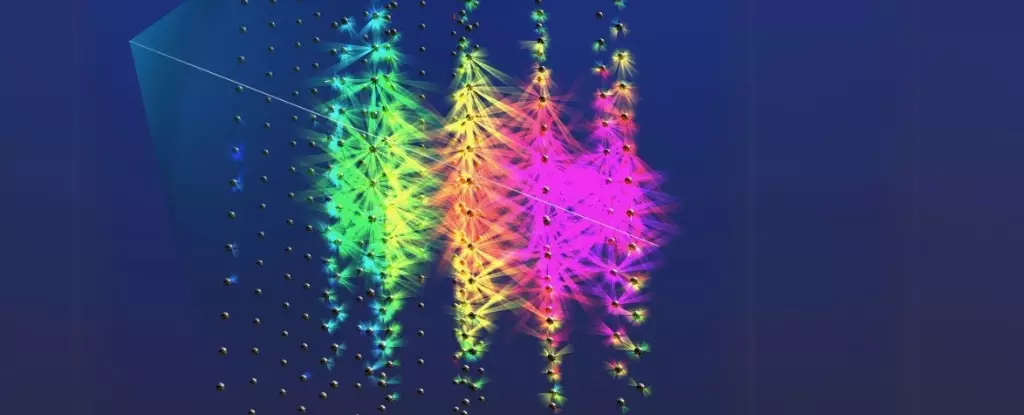The universe is a vast repository of mysteries, with high-energy particles continuously bombarding Earth from the depths of space. Recent advancements in detection technology have paved the way to discern extraordinary events that offer insight into the cosmos. On February 13, 2023, researchers made a groundbreaking discovery near the coast of Sicily, capturing a neutrino with an energy output dwarfing all previous recordings—a staggering 220 petaelectronvolts (PeV). The implications of this discovery are profound, prompting scientists to delve deeper into the mysterious sources of such high-energy particles.
Neutrinos, the elusive elementary particles, have long captivated scientists due to their neutral charge and minuscule mass, which was once considered to be negligible. These ghostly particles permeate the universe, with billions passing through our bodies every second without any noticeable effect. However, despite their abundance, detecting neutrinos poses significant challenges, primarily due to their infrequent interactions with matter. The most effective detection methods entail using vast amounts of specific mediums, like ice or water, in which scientists deploy hundreds of light-sensitive detectors to register the faint flashes of light that indicate a neutrino’s presence.
In the specific case of the record-setting neutrino, researchers harnessed the capabilities of the Cubic Kilometer Neutrino Telescope (KM3NeT). This advanced array, situated 3,450 meters below the surface of the Mediterranean Sea, integrates 378 modules, each equipped with 31 detectors. The technology enabled researchers to capture a stunning 28,000 photons during the detection event, attributing the light emitted to a cascade of interactions initiated by the neutrino’s passage through Earth before it was finally observed.
One fundamental question arises from such a discovery: where did this remarkable neutrino originate? Theories abound, but only a select few astronomical phenomena possess the capability of accelerating particles to such extreme energies—namely, phenomena like supernovae, gamma-ray bursts, and supermassive black holes. Among these candidates, blazars, which are particularly energetic supermassive black holes ejecting jets of radiation directed nearly at Earth, stand out as a prominent possibility.
Researchers evaluated several hypotheses concerning the neutrino’s journey, specifically targeting four potential sources: in-galaxy origins, local Universe sources, transient events like gamma-ray bursts, and much more distant extragalactic sources. Conclusively, none of the closer hypotheses aligned with the observed data, narrowing the search to extragalactic origins. This exploration placed blazars at the forefront of potential sources, leading scientists to survey celestial regions across multiple wavelengths in search of a possible blazar connection.
The challenge lies in the abundance of blazars scattered throughout the cosmos; while the investigation identified 12 potential blazars near the neutrino’s path, researchers were quick to note the need for further scrutiny. As the authors of the study expressed, “Given the large number of blazars in the sky, none of these associations can be considered compelling so far.”
This cautious approach underscores the complexity of astrophysics and the extraordinary intricacies involved in particle detection and characterization. Scientists face an uphill battle in conclusively linking the detected neutrino to its specific source, a task necessitating further research and technological advancements.
An alternative hypothesis worth considering is the cosmogenic production of neutrinos, where such high-energy particles emerge from cosmic rays colliding with the cosmic microwave background—the residual radiation from the Big Bang. If substantiated, this scenario would mark a historic milestone, representing the first time a neutrino produced through this mechanism is detected.
The discovery of the record-breaking neutrino represents a significant leap in our understanding of high-energy astrophysics, opening new avenues for investigation. With theory and observation converging, the quest to unveil the source of this unprecedented event reflects the larger narrative of scientific exploration—a blend of curiosity, speculation, and meticulous investigation. As researchers analyze data and assess potential origins, we stand on the precipice of new discoveries, potentially redefining our understanding of the universe and the phenomena that reside within it. The journey has only just begun, and with each revelation, we inch closer to deciphering the secrets of cosmic energy.

